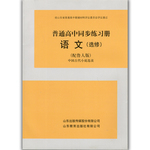题目内容
Japanese scientists have taken the first photographs of one of the most mysterious creatures in the deep ocean — the giant squid①.
Until now the only information about the behavior of the creatures which measure up to 18 meters (59 feet) in length has been based on dead or dying squid washed up on shore or captured②in commercial fishing nets.
But Tsunemi Kubodera, of the National Science Museum, and Kyoichi Mori of the Ogasawara Whale Watching Association, both in Tokyo have captured the first images of Architeuthis attacking bait③900 meters below the surface in the cold, dark waters of the North Pacific. “We show the first wild images of a giant squid in its natural environment,” they said in a report in the journal Proceedings B of the Royal Society.
Little is known about the creatures because it has been so difficult to locate and study them alive. Large ships and specialist equipment, which is costly, are needed to study deep sea environments.
The Japanese scientists found the squid by following sperm whales, the most effective hunters of giant squid, as they gathered to feed between September and December in the deep waters off the coast of the Ogasawara Islands in the North Pacific. They used a remote long-line camera and depth logging system to capture the giant squid in the ocean depths.
The most dramatic character of giant squids is the pair of extremely long tentacles④, distinct from the eight shorter arms. The long tentacles make up to two-thirds of the length of the dead specimens⑤to date. The giant squid appear to be a much more active meat-eating animals than researchers had thought.
Notes:
① squid n. 鱿鱼
② capture vt. 捕获
① bait n. 鱼饵
② tentacle n. 触角,触须
③ specimen n. 标本,样本
- 1.
The passage mainly tells us that ________.
- A.Scientists captured a giant squid alive
- B.Scientists captured a giant squid on camera
- C.giant squids are special meat-eating animals
- D.giant squids mainly live in the deep sea
- A.
- 2.
According to the passage, we can infer that the word “Architeuthis” should refer to ________.
- A.a scientist
- B.the sperm whale
- C.a big ship
- D.the giant squid
- A.
- 3.
Which of the following about giant squids is TRUE?
- A.They like living the cold and deep waters.
- B.They mainly feed on the dead fish.
- C.They like playing, using their tentacles.
- D.They have only eight arms around the mouth.
- A.
- 4.
According to the passage, the scientists located the giant squid ________.
- A.through a remote long-line camera
- B.by using depth logging system
- C.by following sperm whales
- D.by using the bait to attract them
- A.
BDAC
1.主旨大意题。本篇文章主要是向读者讲述了科学家利用摄像机捕获了一条大鱿鱼的图像,其他选项要么与原文不符,要么太片面。
2.词义猜测题。由文章的第三段可知科学家利用相机观测到一条大鱿鱼的情况,因此袭击鱼饵的应当是鱿鱼,所以Architeuthis指的就是鱿鱼。
3.细节判断题。由文章第三段和第五段可知,这些大鱿鱼主要生活在深海处,由于是在北极地区,当然也是较冷的地方。
4.细节理解题。由文章的第五段可知,科学家是通过跟踪sperm whale来知道大鱿鱼的大体位置。
1.主旨大意题。本篇文章主要是向读者讲述了科学家利用摄像机捕获了一条大鱿鱼的图像,其他选项要么与原文不符,要么太片面。
2.词义猜测题。由文章的第三段可知科学家利用相机观测到一条大鱿鱼的情况,因此袭击鱼饵的应当是鱿鱼,所以Architeuthis指的就是鱿鱼。
3.细节判断题。由文章第三段和第五段可知,这些大鱿鱼主要生活在深海处,由于是在北极地区,当然也是较冷的地方。
4.细节理解题。由文章的第五段可知,科学家是通过跟踪sperm whale来知道大鱿鱼的大体位置。

练习册系列答案
 海淀黄冈名师导航系列答案
海淀黄冈名师导航系列答案 普通高中同步练习册系列答案
普通高中同步练习册系列答案 优翼小帮手同步口算系列答案
优翼小帮手同步口算系列答案
相关题目